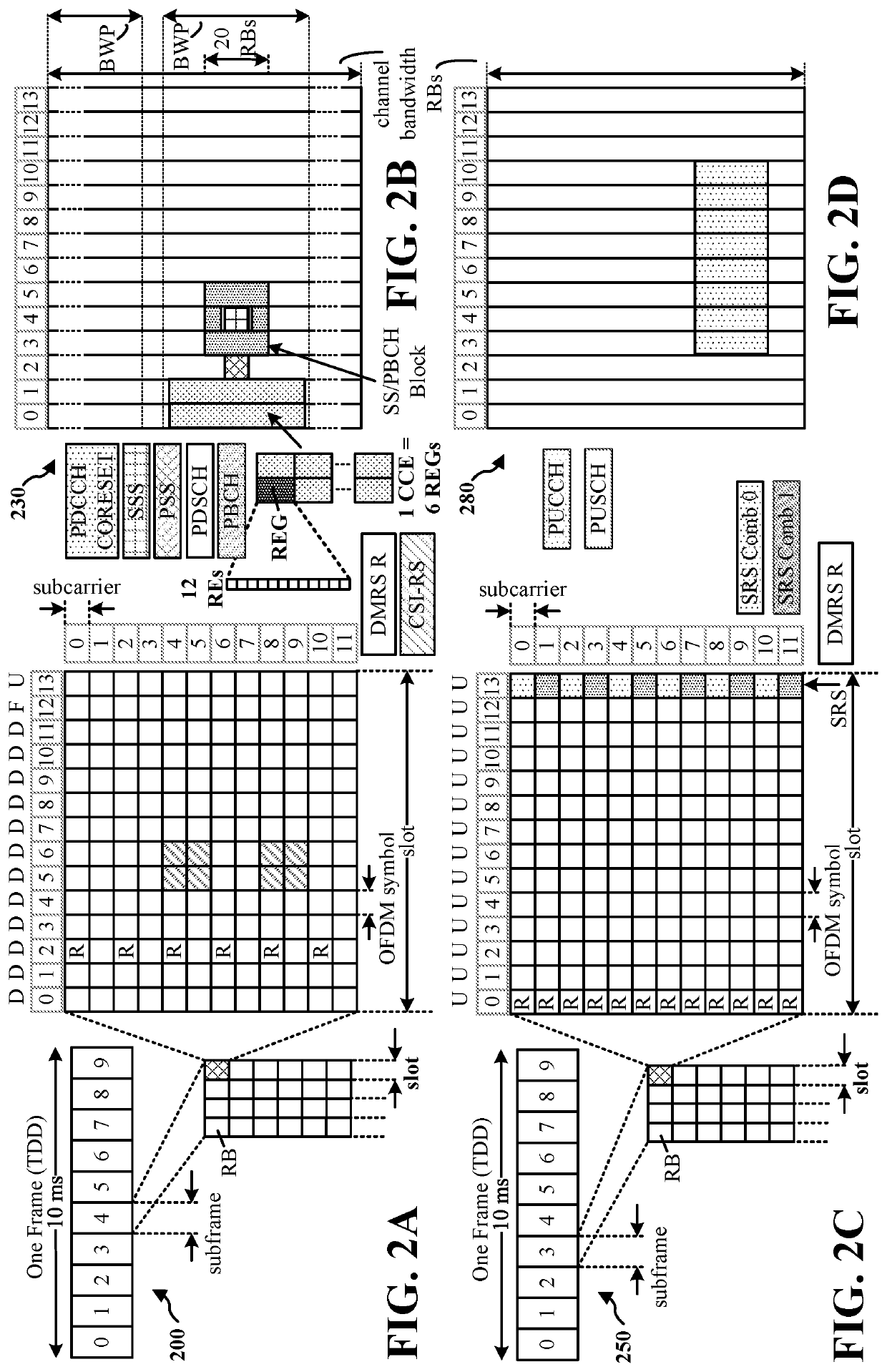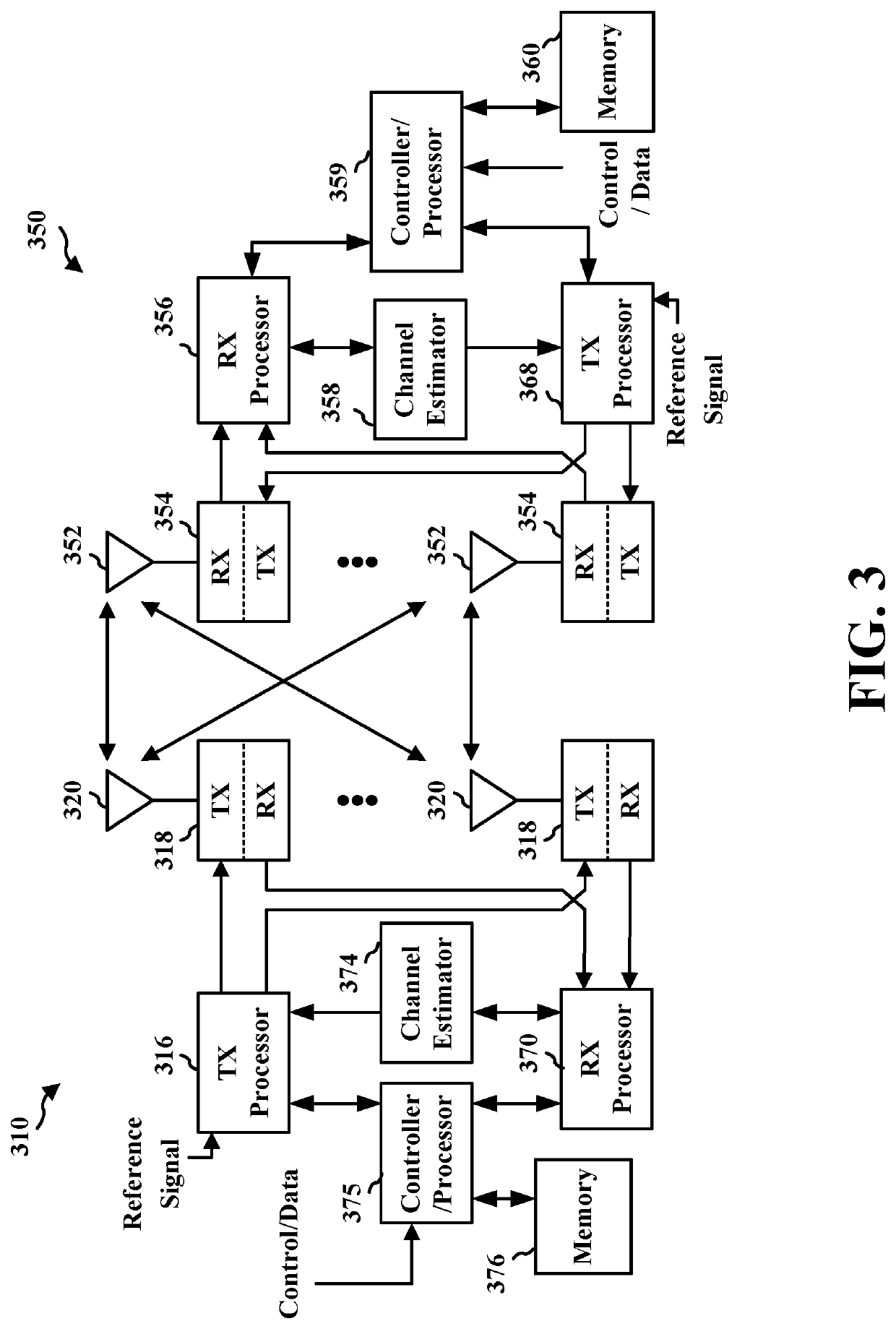Physical uplink control channel with adaptive demodulation reference signal density
a reference signal and physical uplink control technology, applied in the field of communication systems, can solve the problems of limiting the payload of short pucch formats, unused payload etc., and achieves the effect of increasing the payload over time, less efficient use of wireless resources, and increasing the payload siz
- Summary
- Abstract
- Description
- Claims
- Application Information
AI Technical Summary
Benefits of technology
Problems solved by technology
Method used
Image
Examples
Embodiment Construction
[0026]Wireless communication may balance a tradeoff between resource usage and increasing payload size. Wireless communication with a shorter PUCCH format (e.g., PUCCH format 0 and format 2) may be more vulnerable than longer PUCCH formats (e.g. PUCCH format 1, format 3, or format 4) in terms of coverage, whereas longer PUCCH formats may result in an unused payload and less efficient use of wireless resources. For example, if a user equipment (UE) uses a longer PUCCH format, the UE may use the same beam for additional communication, even with changing channel conditions. However, the use of a shorter PUCCH formats limits the payload.
[0027]Aspects presented herein enable the adaptation of PUCCH communication within a slot (e.g., rather than for repetitions over multiple slots). The adaptation may allow for an increased payload over time with a more efficient use of wireless resource. For example, using shorter PUCCH formats may enable faster beam switching and a quicker response to c...
PUM
 Login to View More
Login to View More Abstract
Description
Claims
Application Information
 Login to View More
Login to View More - R&D
- Intellectual Property
- Life Sciences
- Materials
- Tech Scout
- Unparalleled Data Quality
- Higher Quality Content
- 60% Fewer Hallucinations
Browse by: Latest US Patents, China's latest patents, Technical Efficacy Thesaurus, Application Domain, Technology Topic, Popular Technical Reports.
© 2025 PatSnap. All rights reserved.Legal|Privacy policy|Modern Slavery Act Transparency Statement|Sitemap|About US| Contact US: help@patsnap.com



